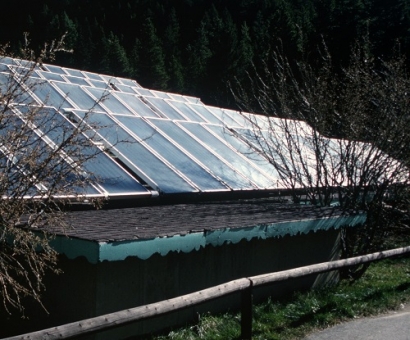
The March 8 study found that Brazil's regulatory framework for the power sector is “very credit supportive,” and that given the country's rising electricity demand, the government will continue to encourage the development of renewable energy as a larger share of the energy mix.
Brazil, the study says, is particularly keen on developing its solar and wind power sector.
A recognition of the need to mitigate the environmental impacts of population growth and development has also inspired Chile to embrace wind and solar.
The government has set a target of having one-fifth of Chile's energy come from renewable sources by 2025, and it is promoting an energy roadmap that could eventually lead to the adoption of a 70 percent renewable energy mix target by 2050.
Another Latin American country moving toward a renewable energy-rich future is Colombia, which recently awarded contracts for 1.4 GW of wind and solar projects to be developed by 2022.
The government's goal there is to diversify the country's energy supply by adding 1.5 GW of renewable energy to its electricity matrix.
S&P Global Ratings said overall, the regulatory framework for electric utilities in Latin America is predictable and transparent, and the laws in most countries allow for timely recovery of operating costs and investment capital.
The financial services company also found that in the short- and medium-term, regulators throughout the region will be focusing on increasing the share of renewable energy used in their respective countries, improving their transmission systems and connectivity to new industrial and urban areas, and using additional investments and digitalization efforts in order to improve efficiency.
However, the analysis wasn't entirely rosy.
Despite strides made by the new government in Argentina, S&P Global's analysts believe the nation still has a long way to go before its regulations catch up with those of neighboring countries.
In order for Argentina to have a thriving electricity sector that attracts private investment, the report said, the government will have to fully update the regulations to establish predictable rate adjustments and allow unimpeded relationships among market participants in order to improve service levels and raise capital expenditures.
Likewise, Mexico's regulatory framework has been slow to improve, although there has been an increase in transparency in the electricity rate setting and share of private investments in the generation sector.
However, there are still substantial uncertainties over the Mexican government’s approach to the electricity sector and its renewable energy ambitions.
In 2012, Mexico adopted a highly ambitious law on renewable energy that called for increasing the amount of electricity generated from clean energy sources, including nuclear energy, to 35 percent by 2024 and to 50 percent by 2050. But it is currently unclear how much progress Mexico has made in that regard.
S&P Global Ratings plans a further analysis to assess the situation.
For additional information:

